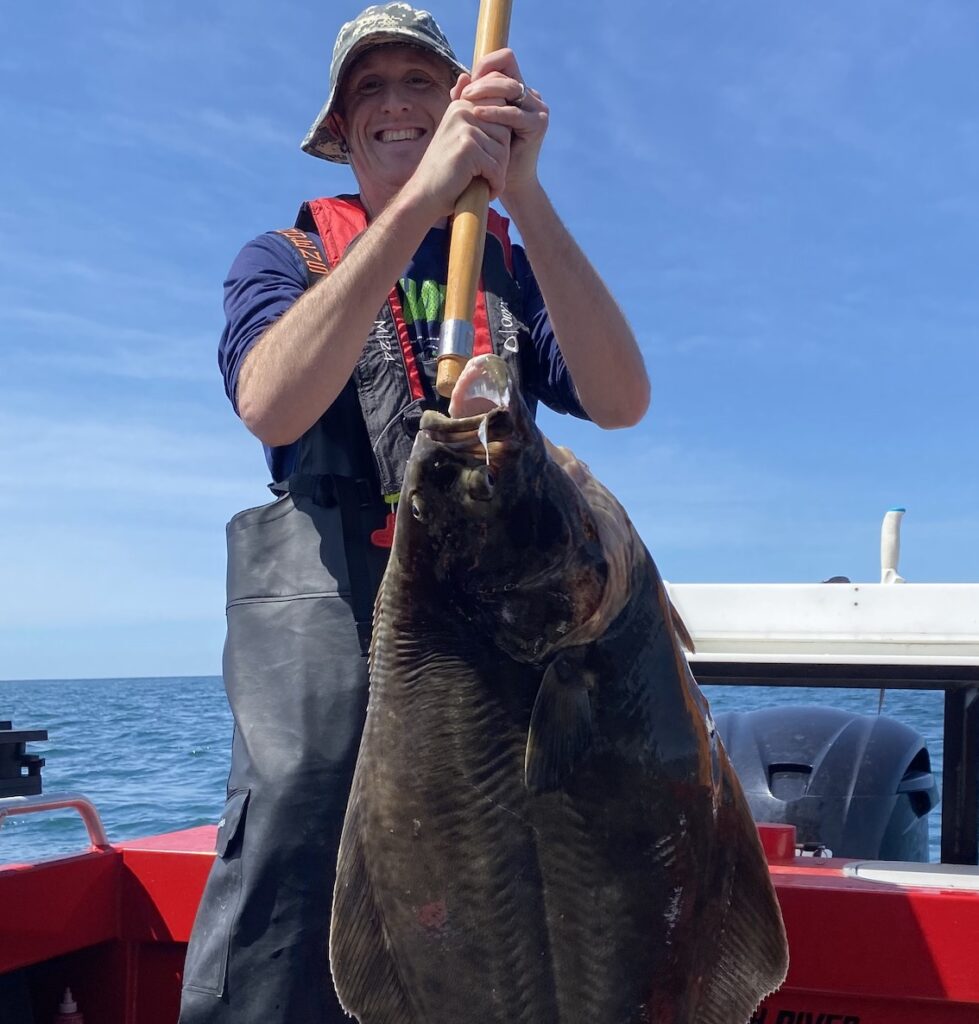
My friends and I recently had an absolutely epic halibut fishing trip out of Westport, WA. You know, the “early limits” back at the dock first kind of trip that you and your buddies will talk about for a long time.
This blog post breaks down everything we did in hopes that it might help someone repeat a similar level of success. And that includes me! When I write this stuff down, I like to go back and study it before the next trip so I can repeat what I did.
I always have to start a post about halibut fishing with a reminder about marine weather safety. Also, one of the most awesome things about this trip is we had a 2 ft swell at 9 seconds for the marine weather forecast!
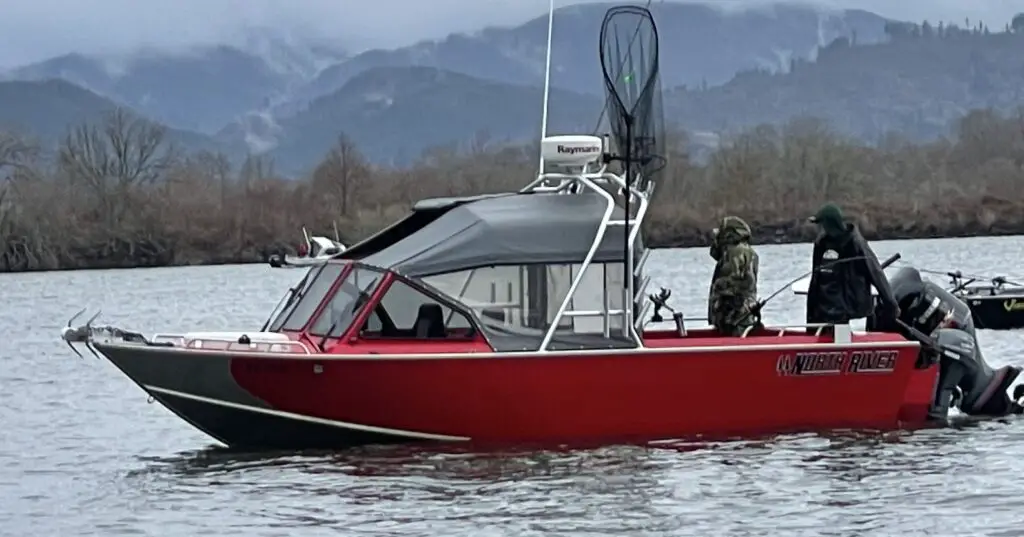
The North River was moving man! Open throttle, like I was on a lake or something!
In all seriousness though, if you are at all nervous about going over a bar like the one at Westport or how to read marine weather forecasts and what to really watch for, check out our comprehensive marine weather page for more details.
If you’re looking for more general information about the Puget Sound and Strait halibut seasons and where halibut are being caught according to the creel reports, check out our blog post about the 2023 Puget Sound halibut seasons here.
Halibut Fishing Trip Recap
We arrived at the Westport boat launch around 5:30 am, with a 5:30 am sunrise, and saw the launch was basically 3/4 full already. There was no line to launch, because everyone was already in the water, steaming towards their deep-water fishing destinations along Grays Harbor Canyon.
The canyon is basically the best and most reliable spot to hook halibut and deep water monster ling cod on the Washington coast.
My crew and I were looking for a different experience though. It’s not that my boat can’t handle going 30 miles offshore to the canyon, it’s more that I didn’t want to fish in 700 ft of water with 2 lbs of lead…
My approach was that I was going to prioritize the fishing experience over the actual catching, knowing that a shallower water approach wouldn’t likely yield as many halibut.
We dropped a crab pot near the south jetty and then steamed off to the halibut grounds. We were looking for structure. Not the rock-pile structure you would look for with lingcod and rockfish, but the more gradual slopes and bowls that are more typical halibut areas.
We didn’t want to fish deeper than 300 ft of water, like I stated earlier.
We found what we were looking for on the charts and made that spot our plan A, with a few backup plans we would go to if we needed them.
There were about 5-10 boats fishing in the same area at the time we were there. Our 2nd drift across one of the slopes yielded our first halibut, weighing in at 32 lbs.
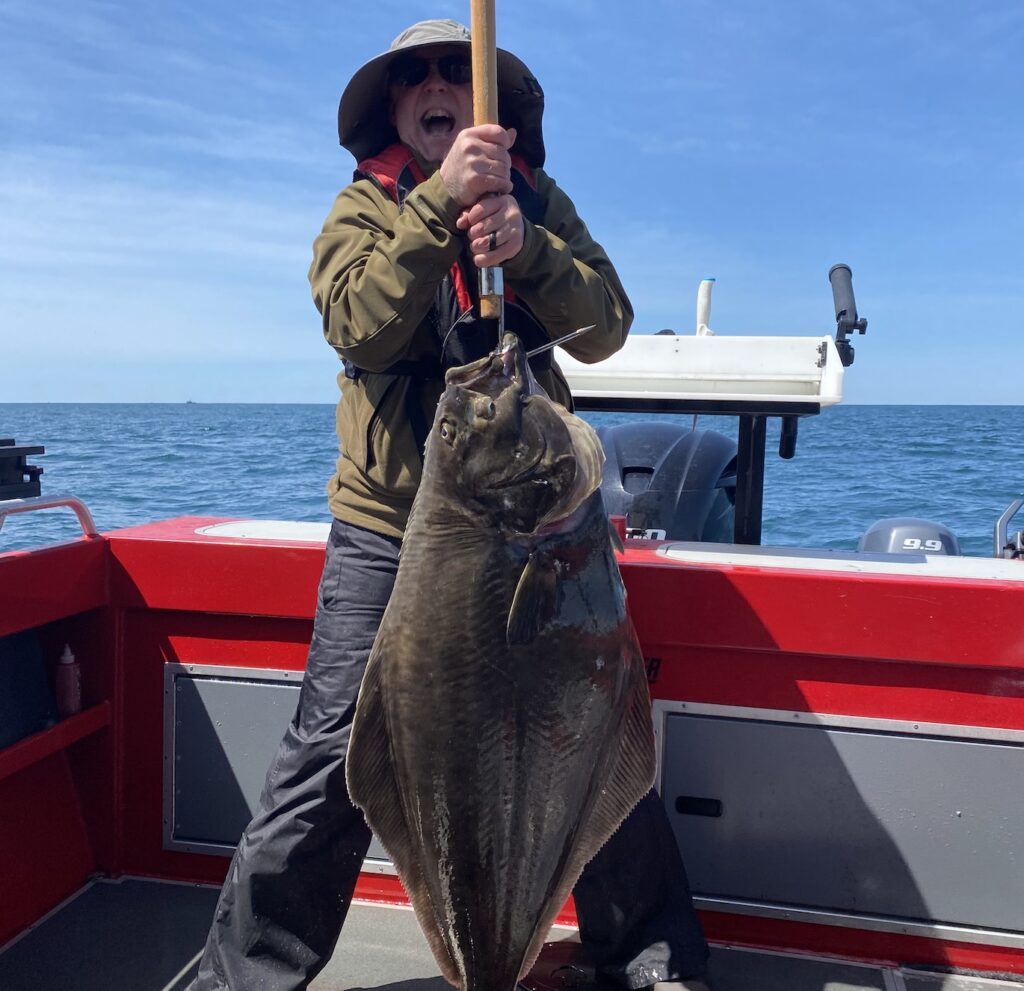
Our 3rd drift yielded the 47 lb fish pictured at the top of the article. Both halibut were caught on black label herring tied on a double hook rig I will explain later in the article.
After about 3-4 more drifts not yielding more fish, we decided to pick up and hit a pinnacle that we thought might hold some big lingcod.
And of course, that’s where we picked up our 3rd halibut on the 2nd drop on a big lancer jig.
We hit a few more rock piles on the way in, picking through ling cod to find a few quality specimens, and then headed in.
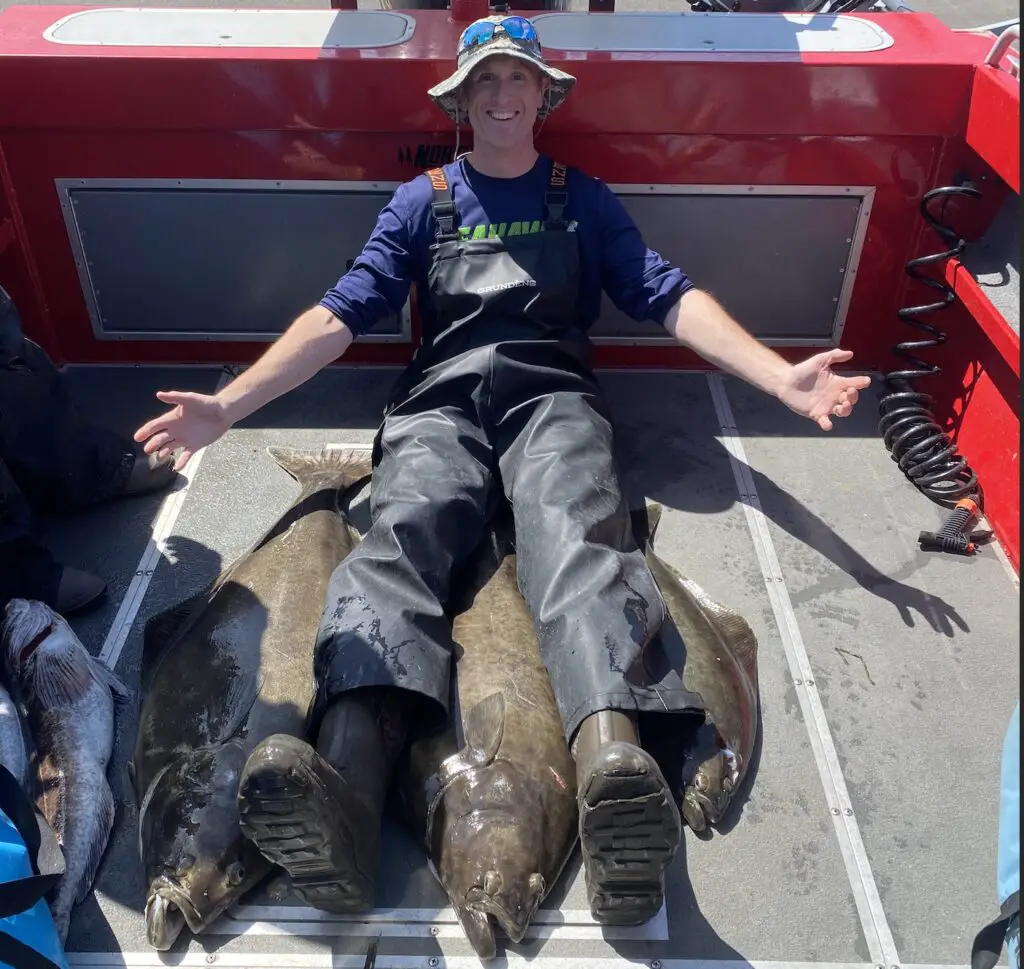
Standing in line to fillet our limits of halibut, we enjoyed the surprised look on people’s faces as we told them we got our halibut in less than 200 ft of water!
Great times!
How we fished for Halibut to get quick limits
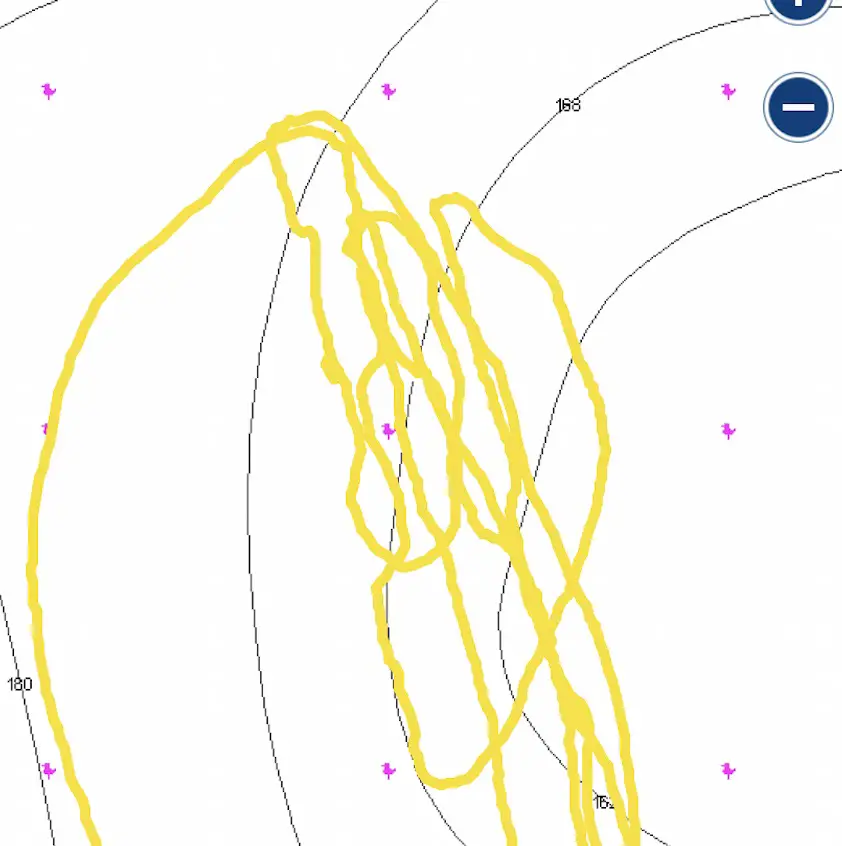
Halibut fishing all starts with location, and I’m kind enough to post my tracks overlaid on top of the location where we fished.
Once I figured out which way the current was moving us, we picked a spot that looked like it would take us in a fishy direction and basically just kept the kicker motor in reverse with minimal throttle as we backed into the current.
That resulted in about a .5 knot drift speed, which is what I really like to do for covering water but being slow enough to really get bit.
I was aggressively jigging a 24 oz pipe jig right over the kicker motor to draw fish in and my two crew mates were using the black label herring on a spreader bar system with about 20 oz cannonballs to stay down in 160-180 ft of water.
Both bites of the halibut on bait happened on the side nearest to my pipe jig. Coincidence? I tend to not think so.
If you find that type of structure and follow a similar approach, I’m confident you will get bit if the halibut are there. That’s the big question though isn’t…finding the halibut! There’s a bit of luck involved sometimes!
Rigging up for Halibut Fishing
I will share all of the rigging we used and provide links to buy stuff on Amazon if available. We get a small commission as Amazon associates, but that doesn’t change your cost. Finding stuff can be so hard on Amazon sometimes, so hopefully these links help you.
Let’s start with rods, reels and mainline
I use the above Ugly Stick Tiger by Shakespeare. It’s a 7’0 medium heavy rod rated for 30-60 lb test and 1-8 oz lure weight. That rod easily handled the 47 lb halibut!
I pair the above rod with the Offshore Angler’s Gold Cup Levelwind Reel – GCP30. If you’re looking to pickup both on Amazon, I couldn’t find the exact match…
I fill up the reel with 80 lb braid fishing line.
I generally use the same type of rod, reel and mainline for both halibut and lingcod. There’s no reward to going for a finesse approach with these fish.
Note: When you use this setup and this heavy of braided line, you will not be able to merely break off when you snag up on the bottom by jamming your thumb in the reel. You also can expect that most things you choose to wrap the braid around to attempt to break it will also break, including body parts…(don’t do this, please!).
Instead, to break off / or pull up off of a snag, wrap the line around a nearby cleat until it stops pulling line from your reel. It will either break your line or pull it out of whatever it’s stuck on and won’t injure you.
Halibut terminal tackle we used on the bait rods
It all starts with these corkscrew swivels.
You connect the corkscrew swivel to a spreader bar.
I then tie a 40 lb test line dropper loop on the short side, to connect my cannonball sinkers and I attach my double Gami 10/0 hook rig tied with 200 lb line on the long side.

Above is what my black label herring looked like all rigged up. Help secure it with this miracle thread I use to wrap the herring with.
Halibut jigging tackle we used
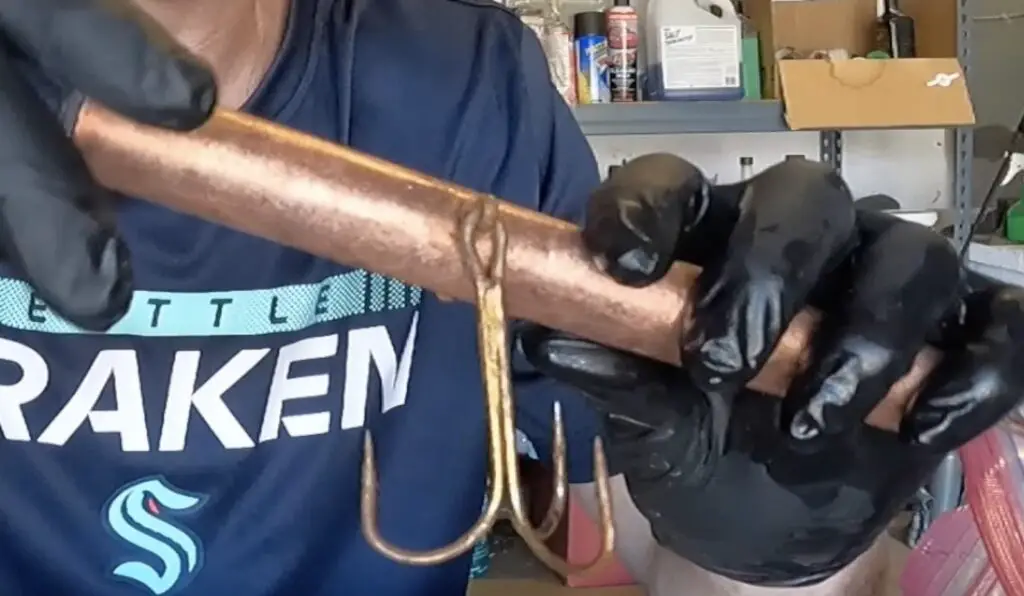
When it comes to jigging, we used pipe jigs to accompany our bait approach to try to draw fish in. I do think I got bit once on the pipe jig as well, but it didn’t stick.
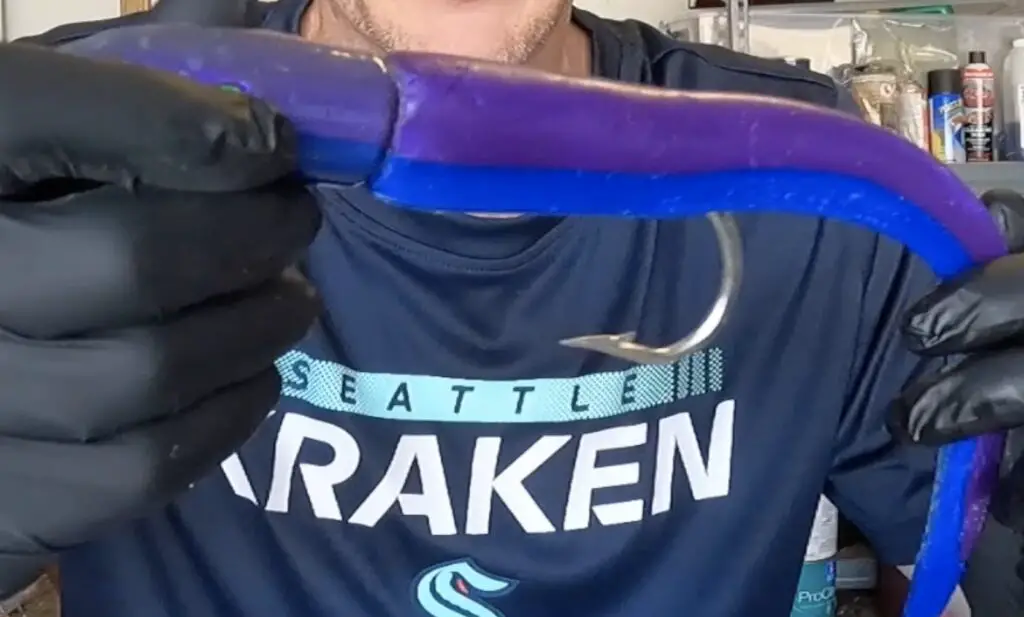
We also used the 11″ lancer jigs quite a bit in areas we though we could hook both lingcod and halibut. And we ended up getting our 3rd halibut in just such a spot.
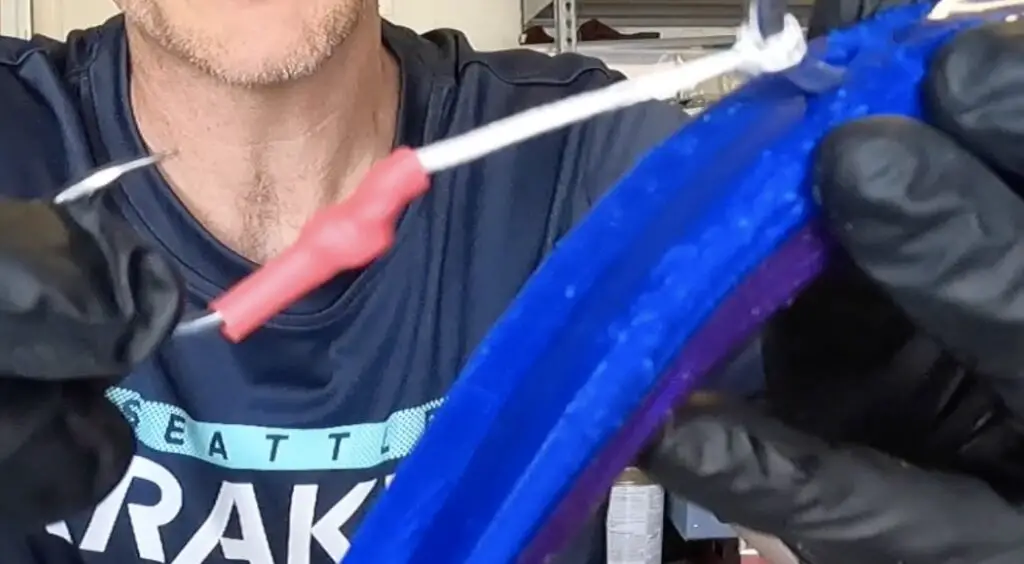
We rigged these lancer jigs with the assist hook pictured above
Here are the assist hooks that we purchased on Amazon. These are a huge help in hooking fish on these big jigs!